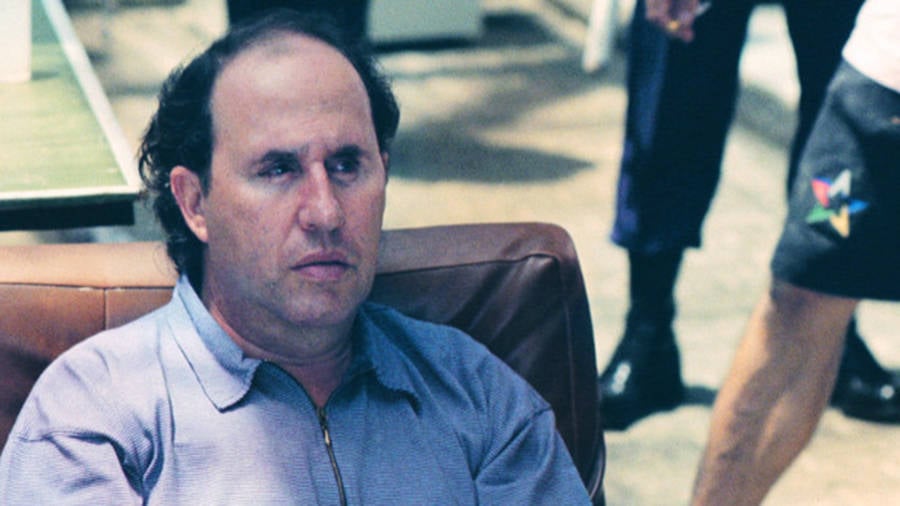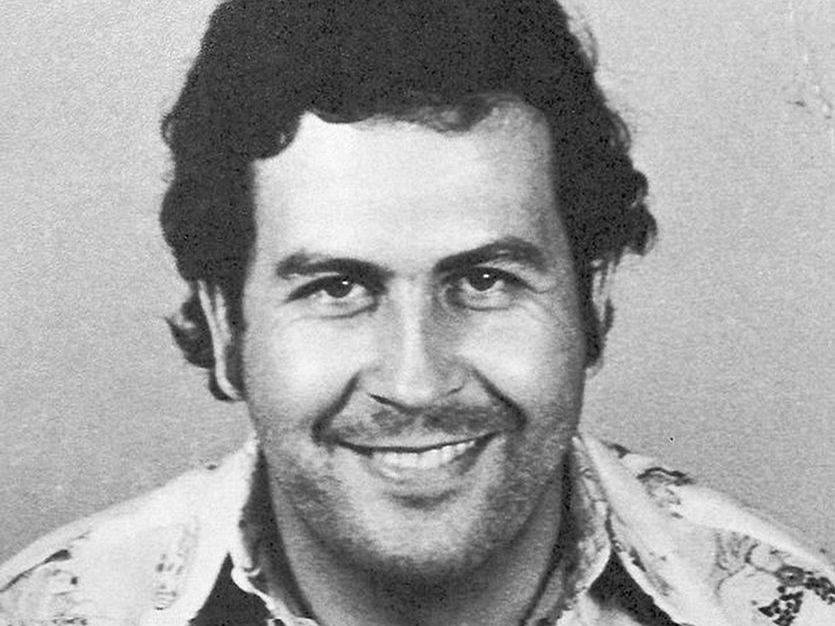Pablo Escobar may be the infamous name everyone recognizes, but his brother Roberto Escobar is the one still profiting from their violent ventures.

thedruglords.comRoberto Escobar was referred to as “El Osito” or “Little Bear” because he was said to resemble the animal.
Most people have heard of Pablo Escobar, the infamous cartel leader, and vicious drug runner. But few have heard of his older brother — Roberto Escobar. That being said, it’s safe to say that both Escobar brothers left a lasting impression on the drug world. The elder Escobar was acting accountant of the Medellin Cartel in its heydey, then spent more than a decade behind bars for his part in the drug ring.
He’s since remained in the public eye despite having lost some of his own via a letter bomb in prison, established a cryptocurrency, converted the Medellin Cartel’s old hideout into a museum, and called for the impeachment of President Trump using a GoFundMe. Indeed, the life story of Roberto Escobar, while less notorious than his brother’s, is no less eccentric.
The Early Life Of Roberto Escobar
Roberto Escobar was born on his family’s cattle ranch in the town of Rionegro, Colombia. Roberto Escobar was born in 1947 and Pablo Escobar in 1949. As children, they helped their father on the ranch until their herd succumbed to disease and the Escobar family was forced to declare bankruptcy.
Roberto, Pablo, their sister Luz Maria, and their parents lived in a small, one-bedroom house where they all slept on two mattresses on the floor. The boys walked four hours to school each morning in their “old and torn clothes” and the younger Exobar brother was once sent back because the family could not afford to buy him shoes. As Roberto Escobar recalled, “our poverty made an impression on our lives that neither my brother nor I ever forgot.”
After a harrowing incident during which a mob of guerillas stormed the town, “in the middle of the night, dragging people off their houses and killing them,” Escobar’s parents decided to send him and his brother to live with their grandparents in the relative safety of the city of Medellin.
Escobar described his younger brother as a bold child who wanted nothing more than to be rich, once proclaiming, “when I’m 22, I want to have a million dollars. If I don’t, I’m going to kill myself.”
The older Escobar, for his part, wanted nothing more than “to be a professional bike rider,” although he eventually wound up studying accounting at college. When he did begin to race professionally his brother acted as his assistant, “wash[ing] my bicycle and prepar[ing] my uniform for the next race,” as well as rallying huge groups from the neighborhood to come and cheer on his brother. At this time, Roberto Escobar remembers being a hero in the eyes of his infamous brother.

Colombian National Police/ Wikimedia CommonsAs a child and into adulthood, Roberto worshipped his little brother, Pablo Escobar.
The younger Escobar had also been studying at a college in Medellin but, according to Roberto, was forced to drop out in 1974, “because he could not pay the necessary fees.” Soon, he had turned down a path that would make the brothers’ family name notorious throughout the world.
Roberto Escobar: The Cartel’s Accountant
Roberto Escobar’s little brother would gain notoriety as the most powerful of South America’s drug lords, otherwise known as narcos. But at first, Pablo merely dabbled in the marijuana trade until he realized that there was a new recreational drug on the rise: cocaine. The boom in demand for the drug in the late 1970s and early 1980s, combined with Pablo’s natural audacity, charisma, and knack for organization, quickly catapulted him to the top of the criminal world.
Some have said Pablo Escobar’s great success could be attributed to the drug “queenpin,” Griselda Blanco, to whom he was protege. Others dispute this and posit instead that the two were deadly rivals. Pablo Escobar was even responsible for the brutal murder of her son. She would later be laid to rest in the same cemetery as Pablo Escobar following her own murder.
Nevertheless, as head and founder of the Medellin Cartel, based in the city where the brothers had grown up in poverty, Pablo controlled an estimated 80 percent of the entire world’s cocaine trafficking and had amassed a personal fortune of $25 billion.
Roberto Escobar was right by his brother’s side during the building of his criminal empire, albeit with their roles somewhat reversed. This time, it was the older brother who took a back seat, working as the accountant for the cartel. In this position, El Osito (or “the Little Bear,” a nickname from his cycling days), the boy who had once been unable to afford new clothes for school handled almost unfathomable amounts of money.
The cartel raked in so much cash that they allotted about $2,500 of their funds alone to the rubber bands they used to keep their bills in crisp condition. But keeping track of all of this cash was definitely a problem the older Escobar brother had to creatively deal with.
Escobar’s biggest problem as the cartel accountant was figuring out where to store the vast amounts of money. Sometimes they were forced to simply bury it or reserve it underground, which resulted in about 10 percent of the cartel’s profits each year being written off due to mold or rat damage.

El Osito serving time in a Colombian prison. Circa 1993.
Roberto Escobar also enjoyed the perks of being his brother’s right-hand man, traveling the world on private jets, wining and dining with celebrities, and enjoying the best of everything that money could buy. Yet, there was a dark side to the brothers’ glamorous lifestyle.
Every cent the cartel earned came at the cost of human blood. In order to ensure he could reign unchecked in Colombia, Pablo Escobar presented officials with a choice of “plata o plomo,” silver or lead, meaning they could either accept his bribes or take a bullet. This practice was exercised by his squad of ruffians known as the fearsome Los Extraditables. It wasn’t only politicians and police officers who fell victim to the cartels. Shootouts and bombings claimed thousands of civilian lives as well.
In 1989, a commercial plane was blown up on Pablo’s orders because he thought a problematic politician was on board killing all 107 people.
Downfall
Thanks to increasing pressure from the U.S. in the late 1980s, Colombia was finally forced to crackdown on the Escobar brothers and the Medellin Cartel. Roberto and Pablo Escobar were both imprisoned for a short while in Colombia before escaping in 1992. Shortly beforehand, Pablo Escobar had constructed his own prison — which was truly more of a resort — known as La Catedral. It was complete with a soccer field, jacuzzi, and bar.
Pablo Escobar’s death, a now infamous shootout with authorities led by DEA agent Javier Pena, transpired on the streets of Medellin a year later while Roberto surrendered to the police in 1993. At one point during the 14 years he served in prison, he received a letter bomb that left him partially blind and deaf.

Wikimedia CommonsColombian police stand over the body of Pablo Escobar, whose death sparked the beginning of the end for the Medellin Cartel.
Although the Medellin Cartel is now defunct, Roberto Escobar has managed to find another way to profit from it. Since his release, the former cartel accountant has been taking advantage of the steadily growing “narcotour” industry in Colombia and shows curious tourists the remnants of his former life of crime.
The legend of Pablo Escobar has been largely romanticized after his death thanks in part to the plethora of films and the Netflix hit series Narcos that recount his exploits. In 2014, Roberto founded “Escobar Inc.” in order to license the family name. In 2016, the company demanded a billion dollars from Netflix for profiting from the Escobar story.
Roberto Escobar isn’t the only family-member profiting from their legacy of drug-running. Pablo’s son, Juan Pablo, writes books and gives interviews about his father’s exploits. Meanwhile, Pablo’s daughter, Manuela Escobar, lives in fear that her family’s past will haunt her for the rest of her life.
Post-Cartel Life
Roberto Escobar currently spends his days operating tours in the house he and his brother occupied during the heyday of the Medellin cartel for $30. While the “narcotourists” may get a thrill from speaking with the man who was at the center of it all, many Colombians are disgusted by what they see as the celebration of a culture that killed thousands of innocents.
Federico Gutiérrez, the current mayor of Medellin, has been pushing to create a tourism industry in his city to counteract the narcotours. “We’re not going to conceal the true history,” Gutiérrez explains, “but we don’t want those who did so much harm to be able to show themselves off as heroes. The real heroes are their victims.”

Wikimedia CommonsRoberto Escobar (far right) still profits from his family’s story by running tours for “narcoturistas.”
Escobar himself doesn’t seem to be too bothered by the bloody legacy he and his brother left behind. When asked by a reporter if he was repentant, he shrugged off the question and replied, “It’s not important to be repentant, I’m a believer.”
Rather than make reparations for his past crimes, Escobar has chosen to devote his energy to impeaching President Trump. In early 2019 he launched a GoFundMe campaign to raise donations for Escobar Inc., allegedly with the ultimate goal of impeaching the American president.
In a rather tone-deaf interview regarding the campaign, Roberto Escobar tried to explain his reasoning.
“My brother Pablo killed hundreds of judges and thousands of policemen. But this time we will do it the legal way, peacefully.”
We’ll be sure to stay tuned for the next saga in the strange epic that has been Roberto Escobar’s life.
Next, check out some rare photos of Pablo Escobar and his family and then read about Los Pepes, the vigilantes who fought back against him. Then, learn all about Gustavo Gaviria, the man who may have been the brains behind Escobar’s cartel.





